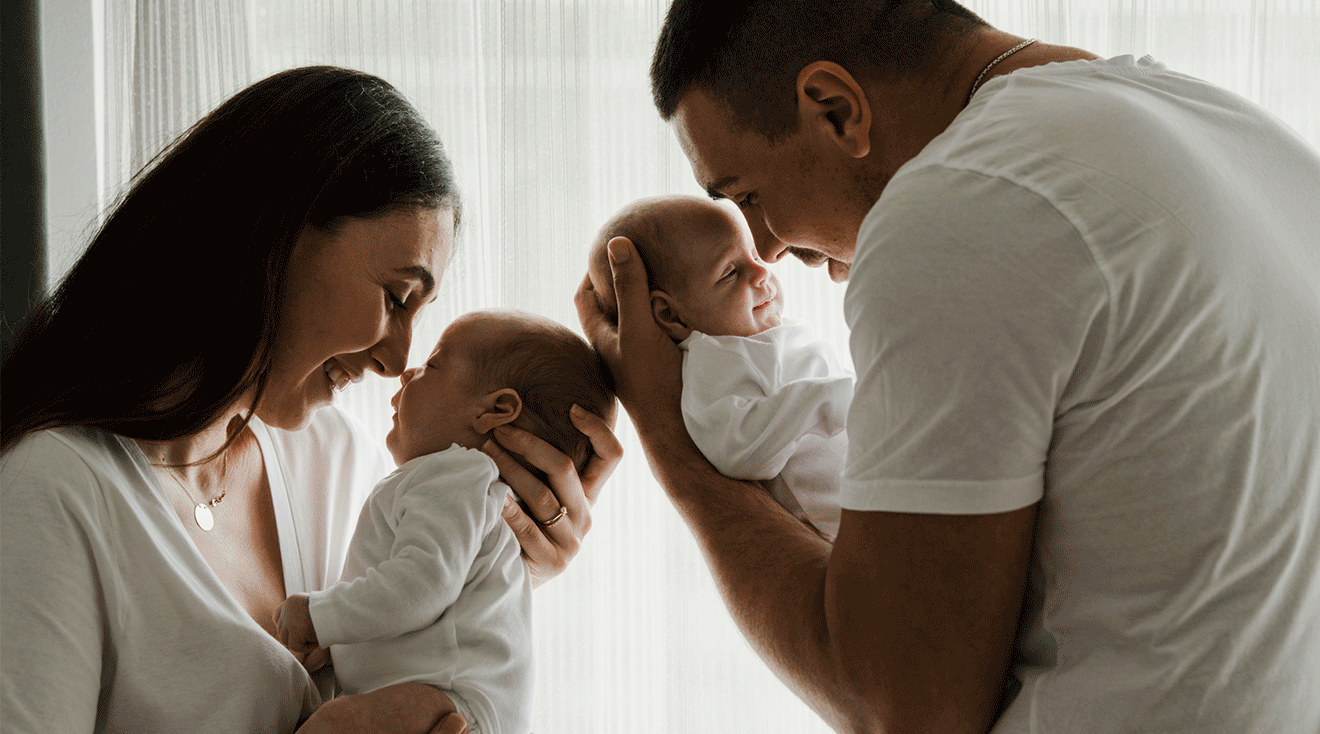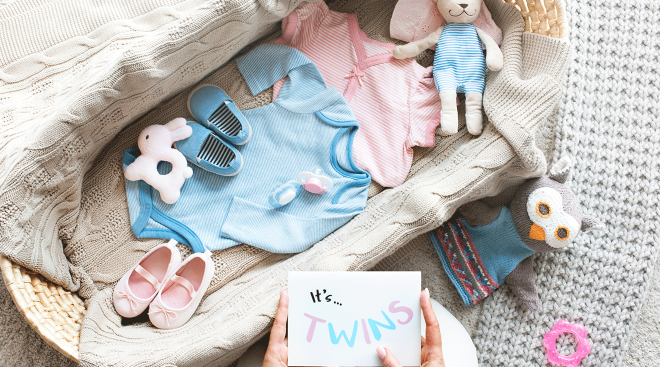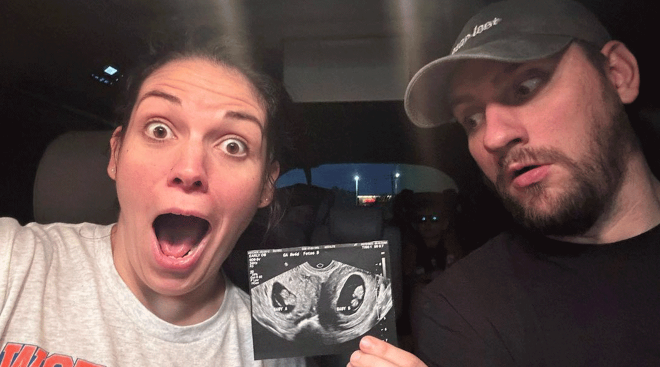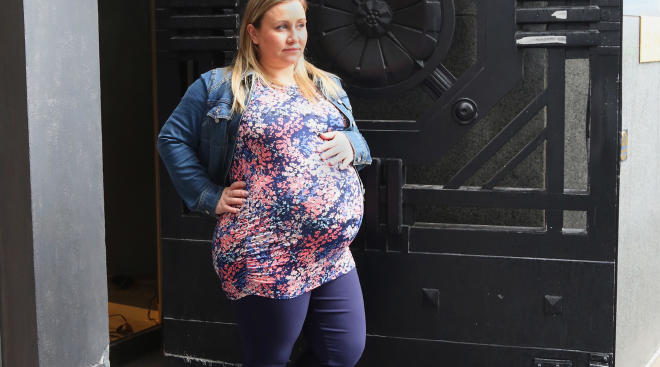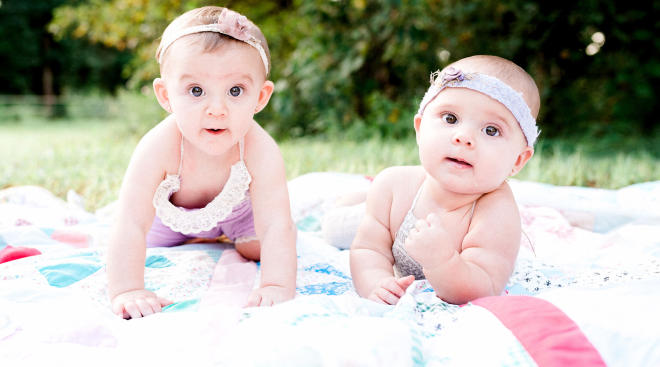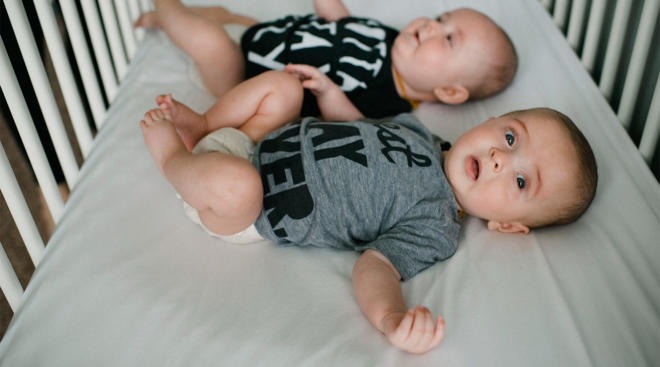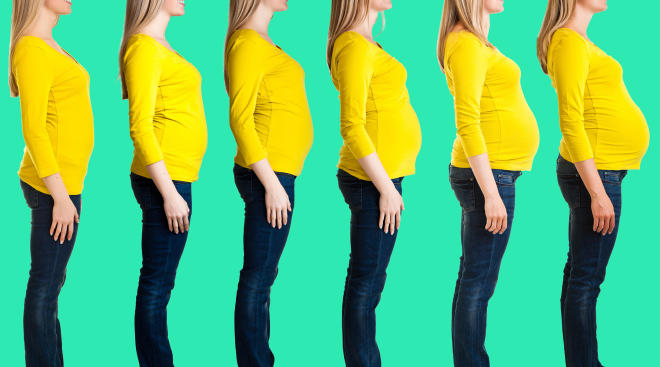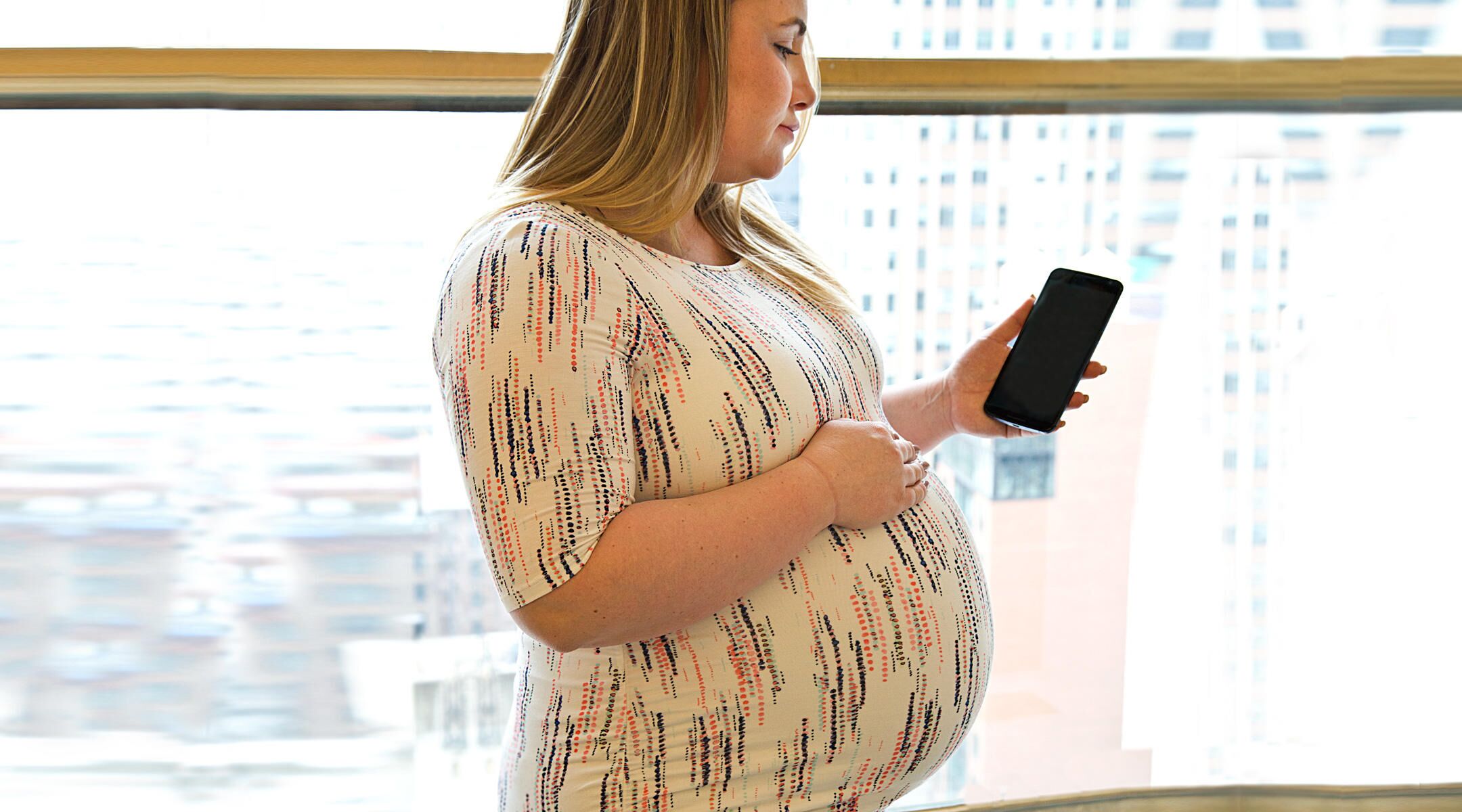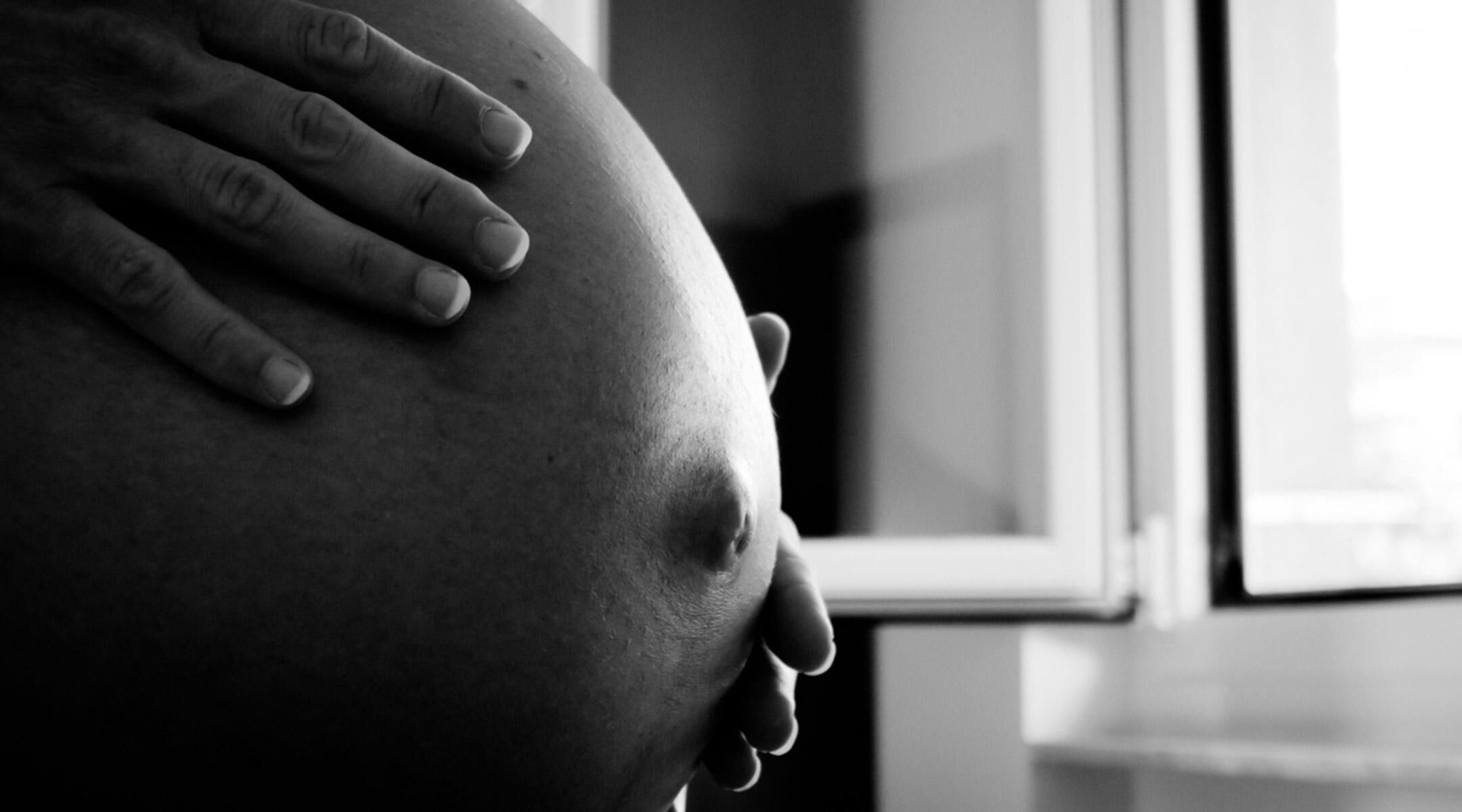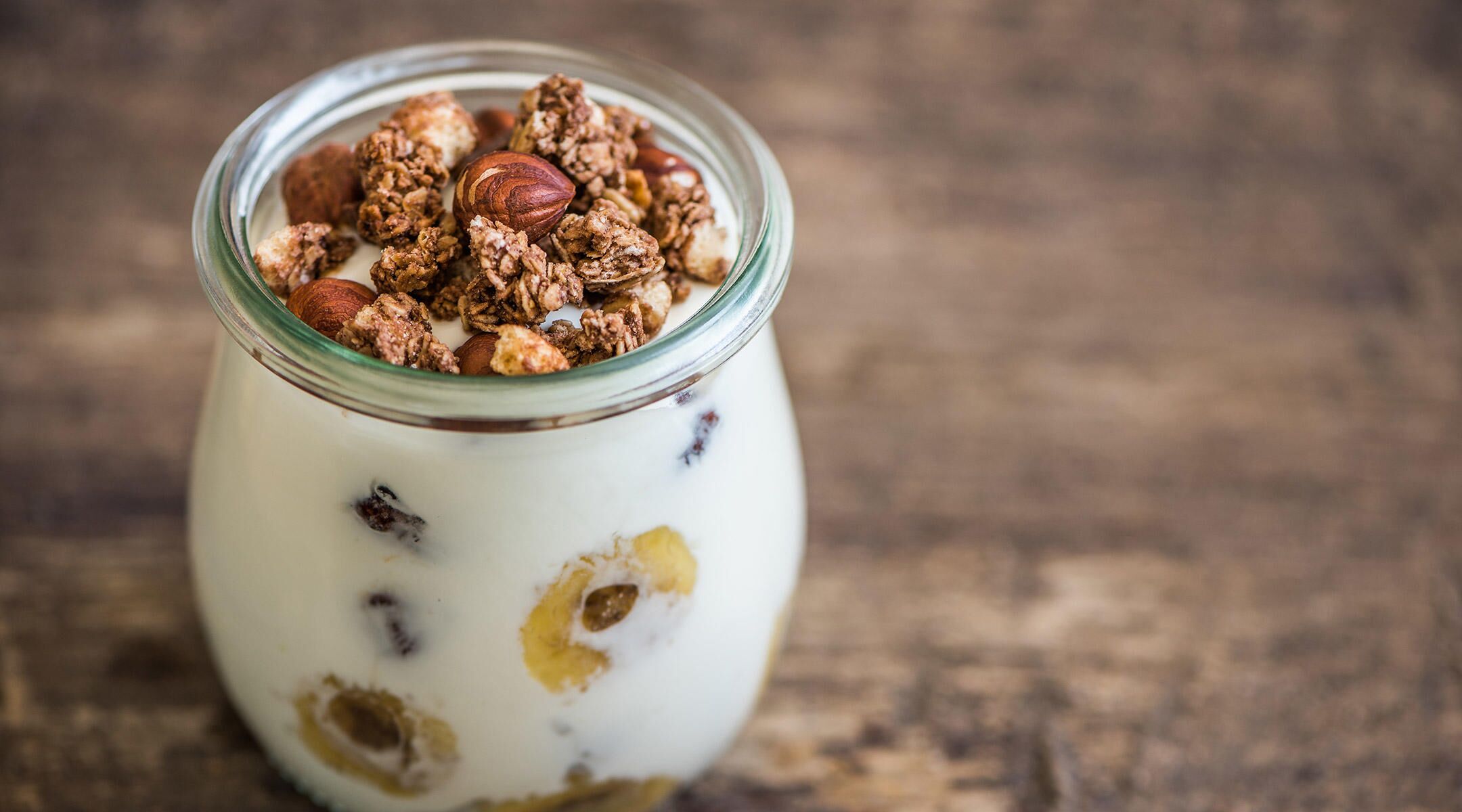How to Have Twins: the Science Behind Multiples
For some parents, the idea of welcoming twins is ideal: You get pregnancy and childbirth with two kids done in one fell swoop, and they each have a built-in playmate for life. Others—particularly those who’d like to be “one and done”—hope to avoid twins. If you fall into the first group, you might be wondering how to have twins. But either way, whether you’re trying to conceive or newly pregnant, you’re probably curious about your chances of having twins. Here’s a primer on what you need to know, whether you’re trying to get pregnant with twins or most definitely not.
The most common types of twins are fraternal (dizygotic) and identical (monozygotic) twins. Here’s how each type happens.
How do identical twins happen?
Identical twins happen when a single fertilized egg splits into two, either before or after it has implanted in the uterus. This means the babies have the same DNA.
Within identical twin pregnancies, there are other variations. Identical twins may or may not share the same amniotic sac, the liquid-filled membrane that surrounds babies during pregnancy and protects them from injury. Each baby may have their own placenta, or they may share a single placenta. This organ—which is unique to pregnancy—delivers oxygen and nutrients to baby while removing waste through the umbilical cord. As per Texas Children’s Hospital, identical twins who share a placenta and/or an amniotic sac are at greater risk of pregnancy complications, and need to be monitored more carefully.
How do fraternal twins happen?
Fraternal twins happen when the ovaries release two eggs, each of which is fertilized by a separate sperm. Both fertilized eggs then implant in the uterus. That means fraternal twins are genetically the same as regular siblings, sharing roughly half of the same genes, notes the National Human Genome Research Institute. During pregnancy, each baby has their own amniotic sac and placenta.
Your chances of having twins are relatively low. According to the Cleveland Clinic, twins occur naturally in roughly one in every 250 pregnancies, although rates are higher in people who’ve used assisted reproductive technology such as in vitro fertilization (IVF). According to the Centers for Disease Control and Prevention (CDC), 31.2 per 1,000 live births every year in the United States are twins—or about 3 percent of all births.
How common are identical twins?
You’re less likely to have identical twins than fraternal twins. About one in three of all twin pregnancies are identical twins, according to research. Identical twins account for just three to five per 1,000 babies born worldwide.
How common are fraternal twins?
The odds are far more in favor of having fraternal twins, who make up around 70 percent of twin pregnancies, per research.
What are the chances of having twins with fertility treatment?
When you’re undergoing fertility treatments, your chances of having twins increases largely thanks to the fertility drugs clomiphene (Clomid) and letrozole (Femara), says Maris K. Toland, MD, an ob-gyn at Dartmouth Hitchcock Clinics Specialty Care in Bedford, New Hampshire. These medications are used to induce ovulation by stimulating the production of egg follicles. “These are particularly helpful in medical conditions where ovulation doesn’t occur regularly or at all,” such as polycystic ovary syndrome (PCOS), says Toland.
While these medications can be very useful in treating infertility, sometimes they can do too good of a job, resulting in more than one egg being released and fertilized. “Both have a twin pregnancy rate of somewhere between 5 to 12 percent,” says Paul Sparzak, DO, an assistant professor of obstetrics and gynecology at the Duke University School of Medicine.
Being pregnant with twins increases the risk of pregnancy complications including preterm birth (more than half of twins are born preterm), gestational diabetes and preeclampsia, notes the American College of Obstetricians and Gynecologists (ACOG). “Doctors counsel patients carefully on these risks prior to using these medications,” says Toland. To reduce a patient’s chances of having twins, Sparzak says doctors only offer ovulation-stimulating medications to people with diagnosed infertility, and start at the lowest effective dose.
ACOG notes that IVF provides another scenario that can result in twin pregnancies—although there have been efforts in recent years to decrease those odds. Today, the American Society for Reproductive Medicine recommends that doctors only transfer more than one embryo in people over the age of 38 or those who have not become pregnant after several rounds of IVF.
While there isn’t a surefire way to predict whether you’ll get pregnant with twins, a number of factors on a mom’s side could increase the odds. Here are some other factors that affect the chances of having twins.
Genetics
Some research suggests that fraternal twins are twice as likely if they run in the mom’s immediate family. That may be because certain genes increase the odds of hyperovulation. “The same is not shown for twins in the paternal line,” says Toland. While some research has noted that identical twins seem to run in some families, there isn’t a clear association or explanation for why this might happen.
You’re also more likely to have a genetic predisposition for twins if you live in certain parts of the world. “For instance, in Nigeria, twins are statistically more common, and twins are less common in parts of Asia,” says Toland.
Age
The older moms are when they conceive, the more likely they are to have twins. A 2019 CDC analysis found that compared to women under the age of 20, moms between the ages of 30 to 39 were twice as likely to have twins, while moms over the age of 40 were three times as likely. A 2012 report by the CDC notes that about one-third of the increase in multiple-birth rates over the past several decades can be attributed to a growing number of women opting to have children later in life.
What explains the increased twin rate in older moms? The ovaries are more likely to release more than one egg per cycle with age—especially if a mom is over 35, notes ACOG.
Weight
Some research has found that people who are overweight or who have obesity are slightly more likely to have multiples. The researchers suggest this might be because obesity can change a person’s levels of certain hormones, including follicle-stimulating hormone (FSH)—increasing the odds of hyperovulation.
Other factors
A number of other factors have been linked to increased odds of getting pregnant with twins. These include having had children before, as well as conceiving shortly after stopping oral contraceptives.
Outside of fertility treatments, there’s no real “trick” to having twins. (Sorry!) Again, your age, weight and genetic makeup all play roles.
There have been a few curious studies linking diet to a higher prevalence of twins. In the 1960s, researchers observed that the Yoruba, an ethnic group in Nigeria, had among the highest twin birth rates in the world—fourfold that of Europeans. Some researchers tied this to the yams and okra leaves traditionally found in the Yoruba diet, which they guessed might increase levels of chemicals involved in ovulation. Other researchers have since questioned this theory, noting that the same foods are found in the diets of nearby communities that don’t have higher rates of twin births. They believe environmental and genetic factors (which may still include the group’s overall diet, just not one specific food) likely play a role.
Another widely publicized study published in 2006 found that people who consumed more dairy leading up to their pregnancies were more likely to have twins. The researchers speculated that this could be because cow’s milk contains insulin-like growth factor (IGF), a protein that stimulates ovulation by increasing the sensitivity of the ovaries to FSH. That said, it’s just one study. “It’s very little evidence, [and we] can’t use it as the rule,” says Sparzak.
If you’re having twins, you may be more likely to experience more severe early pregnancy symptoms, including nausea and vomiting, and you may gain weight more quickly, notes ACOG. “It’s not clear if this is due to higher levels of [human chorionic gonadotropin (hCG) hormone], but it definitely is something we see," says Toland. You may also have signs of hyperthyroidism, such as an elevated heart rate. That’s because hCG can stimulate the thyroid, and you have more hCG in your system when you’re expecting twins, says Sparzak. “Usually after the first trimester starts, it plateaus and then starts to decrease. When the hCG starts to go down, those effects go away,” he explains.
You’re also likely to experience more weight gain than you might with one baby, along with the physical discomfort that goes with carrying two babies, says Toland.
The most common way for your doctor to determine if you’re having twins is with an ultrasound. “We may suspect a twin pregnancy if a patient has more nausea than is typical, or if pregnancy hormone levels, hCG, are higher than expected,” adds Toland.
Cell-free DNA testing—a blood test that can look for certain chromosomal abnormalities as soon as 9 weeks of pregnancy—can sometimes pick up a twin pregnancy before an ultrasound can, notes Toland. But if you think you might be pregnant with twins, it’s still important to have an ultrasound in the first trimester to determine what type of twins you’re having. “This guides doctors to choose the right level of prenatal care,” she says.
The bottom line is that there’s no magic answer to how to have twins. Getting pregnant with twins depends on a number of factors, including fertility treatments, age and genetic makeup. So don’t start seeing double just yet—but do read up on your chances of having twins and check in with your doctor if you have any questions or concerns.
Please note: The Bump and the materials and information it contains are not intended to, and do not constitute, medical or other health advice or diagnosis and should not be used as such. You should always consult with a qualified physician or health professional about your specific circumstances.
Plus, more from The Bump:
Paul Sparzak, DO, is an assistant professor of obstetrics and gynecology at the Duke University School of Medicine. He earned his medical degree from the Chicago College of Osteopathic Medicine at Midwestern University Medical School.
Maris K. Toland, MD, is an ob-gyn at Dartmouth Hitchcock Clinics Specialty Care in Bedford, New Hampshire. She earned her medical degree from Tufts University School of Medicine in Boston.
Cleveland Clinic, There Are More Types of Twins Than You Might Think, March 2023
StatPearls, Twin Births, February 2023
Texas Children’s Hospital, Monochorionic Twins
National Human Genome Research Institute, Identical Twins, October 2023
Cleveland Clinic, Twin Pregnancy, June 2022
US Centers for Disease Control and Prevention, Multiple Births, April 2023
American College of Obstetricians and Gynecologists, Multiple Pregnancy, January 2023
American Society for Reproductive Medicine, Guidance on the Limits to the Number of Embryos to Transfer: A Committee Opinion (2021), September 2021
Human Reproduction, Twin Peaks: More Twinning in Humans Than Ever Before, June 2021
US Centers for Disease Control and Prevention, Is Twin Childbearing on the Decline?, April 2023
US Centers for Disease Control and Prevention, Three Decades of Twin Births in the United States, 1980-2009, November 2015
Obstetrics & Gynecology, Relationship of Maternal Body Mass Index and Height to Twinning, March 2005
International Journal of Gynecology & Obstetrics, Obesity Increases the Odds of Multiple Pregnancies: A Nationwide Register-Based Cohort Study in Finland, March 2023
Human Reproduction Update, Dizygotic Twinning, January/February 2008
BJOG: An International Journal of Obstetrics and Gynaecology, Twinning in Yoruba Women, December 1960
Journal of Reproductive Medicine, The Yoruba Contribution to Our Understanding of the Twinning Process, June 1989
Plos One, Community Perceptions on Causes of High Dizygotic Twinning Rate in Igbo-Ora, South-West Nigeria: A Qualitative Study, December 2020
Journal of Reproductive Medicine, Mechanisms of Twinning: VII. Effect of Diet and Heredity on the Human Twinning Rate, May 2006
Navigate forward to interact with the calendar and select a date. Press the question mark key to get the keyboard shortcuts for changing dates.
































